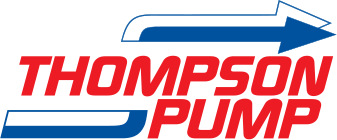Exxon Valdez Alaskan Oil Spill
On March 24, 1989, when the report that the oil tanker, Exxon Valdez, had hit Bligh Reef in Prince William Sound was on the evening news, Thompson Pump had already mobilized our Emergency Response Team (ERT) to determine what should be our involvement. Our distributor in Anchorage, Bob Cannon of Alaska Pump & Supply, Inc. asked about the availability of large, diesel-driven portable pumps to assist in this emergency.
Large quantities of crude oil were spilling into the Sound and the Gulf of Alaska and an environmental disaster was eminent. Although the precise methods or requirements were not yet determined, the anticipation was that pumps would be required for capturing the recovered oil, transferring it and for cleaning the beaches and shorelines.
This remote area of the world is inaccessible except by sea and air. There were no roads and the availability of equipment was limited and difficult to mobilize. Since Thompson Pump was capable of producing and providing a large number of pumps on short notice, Alaska Pump issued the order to Richard Castle, Thompson’s National Sales Manager – build and ship as soon as humanly possible.
Working long hours and multiple shifts under the direction of Bill Crooms, Production Manager, Thompson Pump was able to build, package and deliver 22 – 6” Heavy Duty Self-Priming Trash pumps mounted on integral fuel tank skids and powered by John Deere 4239 diesel engines within 2 – weeks after receiving the order. 12 of these units were dispatched for the MAXI BARGE PROJECT, which involved skimming oil from the surface into barges and, then, from the barges into tanks for transfer and disposal.
Other pumps were used on shore to pump sea water onto the beaches to wash the residue back down so that it could be captured by the oil absorbent booms. Still another application was utilizing the low pressure Thompson pumps to fill tanks which would subsequently become the source of water for the high pressure, hot water cleaners which were separating the oily residue from the rocks, boulders and even the coarse sandy beaches.
In order to deliver the pumps and other equipment to the remote clean-up locations, some pumps were shipped by air freight to Anchorage and others by rail to Seattle, WA. From marshalling yards in those cities, they were loaded onto barges or transported by helicopter to the work sites.
The final tabulation was that approximately 11 million gallons of crude oil had spilled from the single-walled tanker into this pristine environment. Over the course of the 3 – year clean-up project, in addition to the large, diesel-driven pumps, Thompson and Alaska Pump also provided numerous 3” electric motor powered trash pumps, 3” & 4” electric – driven single diaphragm pumps and 2” gasoline-driven utility pumps.
